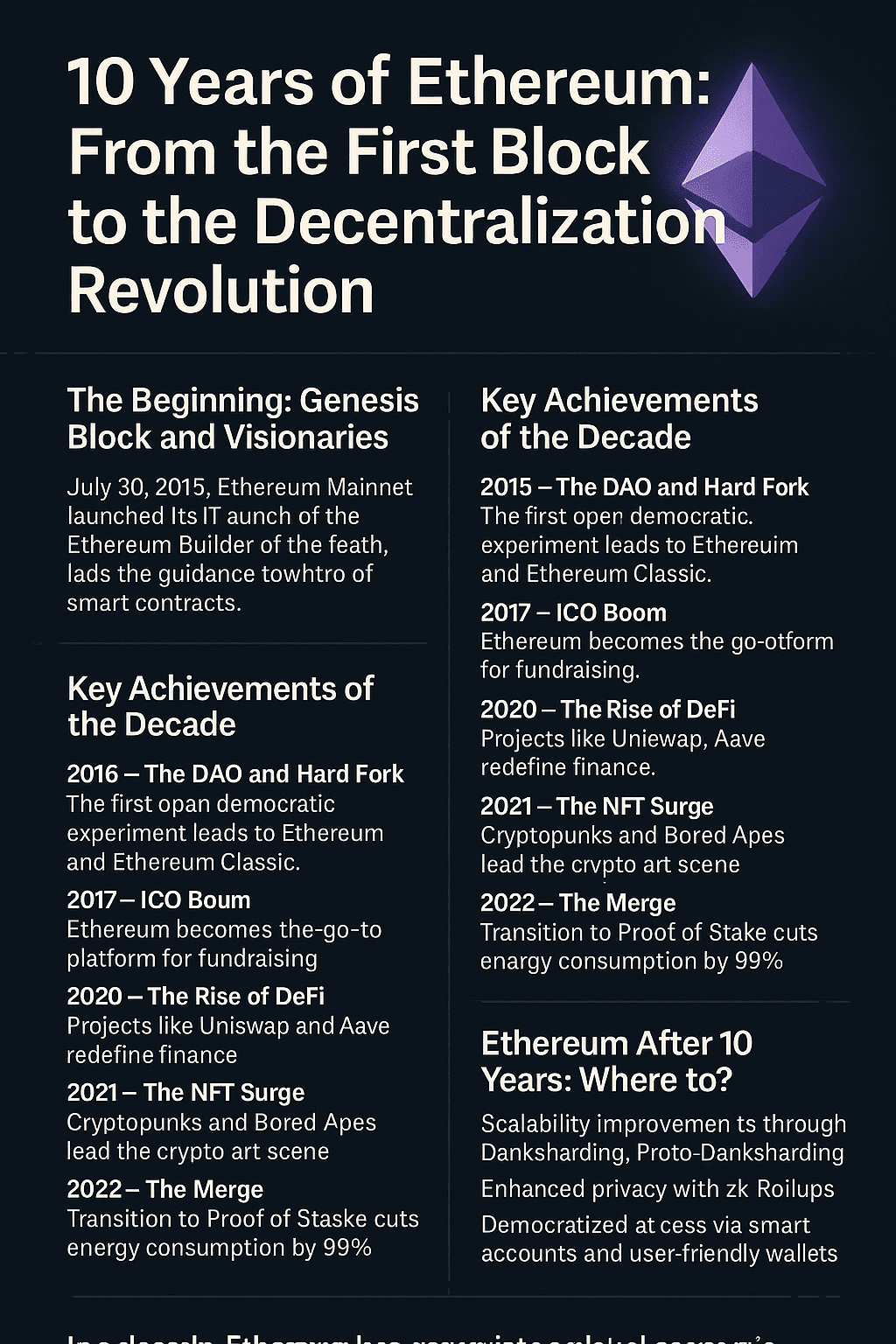
On July 30, 2015, the first block of the Ethereum network (Ethereum Mainnet) was launched, marking the beginning of an ambitious project to expand blockchain technology capabilities. Today, we celebrate 10 years of this historic achievement that changed the way we handle money, identity, contracts, and governance.
In this article, we review the stages of Ethereum's evolution, from its humble beginnings to becoming the backbone of what is known today as Web 3.0.
---
🔹 The beginning: the "Genesis" block and the signature of dreamers
The Ethereum network began with a vision from Vitalik Buterin and his team, who wanted to go beyond Bitcoin's simple functions of sending and receiving money, towards a programmable environment through "smart contracts".
In the "Genesis Block", there were no applications or high gas fees, but the ground was being prepared for bold ideas waiting to be executed.
---
🔹 Key milestones in the contract path:
1. 2016 - DAO and chain split (Hard Fork):
The first open democratic experiment failed security-wise but demonstrated the resilience of the community. The chain split into Ethereum and Ethereum Classic.
2. 2017 - The ICO boom:
Ethereum has become the preferred platform for fundraising, solidifying its position as the world's leading smart contract platform.
3. 2020 - The birth of DeFi (Decentralized Finance):
A new wave of innovations like Uniswap, Aave, and Compound completely redefined the financial system.
4. 2021 - The NFT boom:
Ethereum has become a home for crypto art and digital asset ownership, through projects like CryptoPunks and Bored Ape Yacht Club.
5. 2022 - The historic transition to Proof of Stake (The Merge):
An unprecedented event reduced energy consumption by over 99%, reaffirming Ethereum's commitment to sustainability.
---
🔹 The ecosystem today: Key players in the landscape
Developers: Thousands of developers contribute to tools like Solidity, Vyper, and Infura.
Layer 2s (L2s): Networks like Arbitrum and Optimism expanded Ethereum's capacity and accelerated transactions.
DAOs: Community governance models like MakerDAO and Gitcoin embody true decentralization visions.
Stablecoins: USDC, DAI, and others rely on the Ethereum network as an operational base.
---
🔹 Ethereum after 10 years: Where to?
As the tenth anniversary approaches, Ethereum's focus shifts towards:
Scalability improvements (Danksharding and Proto-Danksharding)
More privacy through zk-Rollups
Democratizing access through smart accounts and user-friendly wallets
---
🟢 Summary:
Ethereum is no longer just a "blockchain". It is an open global economic operating system, hosting millions of applications and transactions daily. With each technological advancement, its strength as a global community of developers, creators, and users grows.
On the tenth anniversary, we not only celebrate an amazing past but a promising decentralized future... led by Ethereum.
#EthereumTurns10 #ETHETFsApproved #Ethereum #BiananceSquare #Write2Earn
